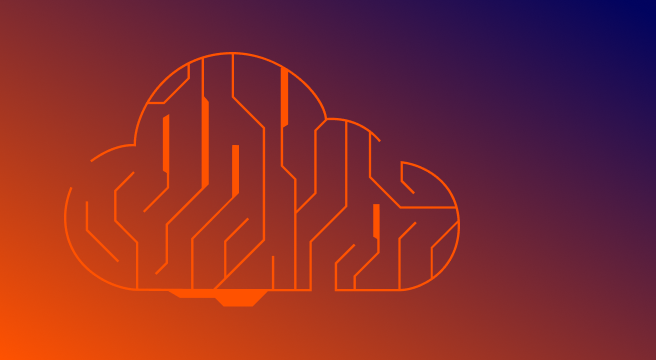Identity and access management (IAM) solutions
Published | July 15, 2025 |
On-Prem, cloud, hybrid & CIAM
Types of IAM solutions include on-prem IAM, cloud-based IAM and hybrid IAM. Customer identity and access management (CIAM) manages external customer identities instead of internal users. Each option has benefits depending on your specific needs and infrastructure.
Types of Identity and access management solutions
Identity and access management (IAM) ensures every user, device and app has the right access to what it needs. Nothing more. Nothing less.
But your infrastructure isn’t one-size-fits-all.
You likely manage a mix of on-premises and cloud-based systems and services. Each setup presents its own challenges for managing digital identities. That means a single, inflexible IAM solution most likely won’t fit your needs.
So, how do you know what type of IAM is best for your organization? Or if you need to use it all?
To build a strong identity security strategy, you should understand the differences between the different types of IAM: on-prem, cloud-based, hybrid and customer identity and access management (CIAM).
In this IAM guide, learn what each solution does best, where it might fall short and how to know which one (or all) will meet your organization’s needs.
Whether securing internal users, external customers or both, the right IAM solution can help you reduce risk, meet compliance requirements and keep your business moving.
On-prem IAM
On-prem IAM refers to identity management systems you deploy and manage within your infrastructure. You generally install these solutions on physical servers with centralized access control for internal resources.
On-prem IAM systems give you more complete control over your IAM infrastructure, but require significant IT resources to maintain and secure.
The key advantage of on-prem IAM solutions is customization capabilities. You can tailor the IAM system to your specific security policies, business needs and compliance requirements. On-premises IAM solutions typically include features like user authentication, access control and logging.
The drawback to on-premises IAM systems is that they are typically less scalable and more complex to integrate with modern cloud environments compared to cloud-based IAM solutions. However, they remain well-suited to securing internal, on-premises systems.
Cloud-based IAM
Cloud-based IAM solutions enable identity and access management capabilities via the cloud. A third party hosts and manages these services, which reduces the need to invest in and maintain expensive on-prem infrastructure.
Cloud IAM uses features like user authentication and role-based access controls as centralized identity management for distributed or remote workforces.
For example, Tenable Cloud Security gives you visibility into your security configurations. It helps assess how well your team sets them up, especially when you're using identity providers like Okta and Google Workspace. It means you can ensure you’re properly locking down and securely managing user roles and permissions for your cloud resources.
See how Tenable helps you strengthen your cloud-based access controls and secure cloud configurations with visibility into identity provider misconfigurations.
One major benefit of cloud-based IAM is scalability. You can quickly adapt your IAM infrastructure to match business growth without overhauling on-prem systems. Cloud-hosted IAM solutions simplify deployment and allow seamless integration with cloud services like Google Cloud, AWS and Azure.
Cloud-based IAM tools are often subscription-based. They may be more cost-effective than traditional on-premises systems. They also offer features like integration with single sign-on (SSO), multi-factor authentication (MFA) and automated provisioning.
Cloud IAM is becoming a go-to security solution.
Hybrid IAM
Hybrid IAM systems combine elements of on-prem and cloud-based IAM solutions. You may prefer this option if you want to control your internal resources while taking advantage of the scalability and flexibility of the cloud.
Hybrid IAM enables seamless management of identities across both on-prem and cloud environments, ensuring consistent access controls regardless of where you host your systems.
If you have a mix of legacy on-premises infrastructure and newer cloud-based apps, hybrid IAM can give you the best of both worlds.
It ensures your employees can securely access resources no matter where they are, while maintaining the flexibility to integrate with both on-prem and cloud-based identity services.
Hybrid IAM commonly incorporates federated identity approaches, allowing users to authenticate across both on-premises and cloud systems using a single set of credentials via standards like SAML, OIDC or OAuth.
However, the challenge of hybrid IAM is ensuring seamless integration and maintaining security policies across on-prem and cloud resources.
Additionally, you may need to manage the complexity of configuring and maintaining hybrid systems, especially as your infrastructure evolves.
Customer identity and access management (CIAM)
Customer identity and access management (CIAM) manages identities and access for external users, typically customers, rather than internal employees.
CIAM solutions handle large-scale user bases while providing secure and seamless experiences across websites, mobile apps and e-commerce platforms.
CIAM is key to protecting user data, ensuring privacy and enabling personalization. CIAM systems provide secure registration, authentication, consent management and user profile management for consumers, enabling security and personalization at scale.
The main difference between CIAM and traditional IAM is the focus on external customers rather than internal employees. CIAM systems must handle large amounts of user data while providing secure authentication.
Finding the right IAM solution
Figuring out which IAM solution fits your environment isn’t always straightforward. Each has its own requirements, and if you’re trying to stitch together different tools without a clear strategy, it’s easy to end up with inconsistent access controls and limited visibility.
The real risk? Gaps like these give attackers exactly what they’re looking for to infiltrate your systems and access your sensitive data.
To strengthen your defenses, you need a comprehensive view of identity exposure across your infrastructure. That’s where exposure management comes in. By correlating your IAM controls with vulnerability data and misconfiguration insights, you can find and fix identity-based attack paths before attackers can exploit them.
IAM resources
IAM products
Cybersecurity news you can use
- Tenable Cloud Security
- Tenable Identity Exposure
- Tenable One


